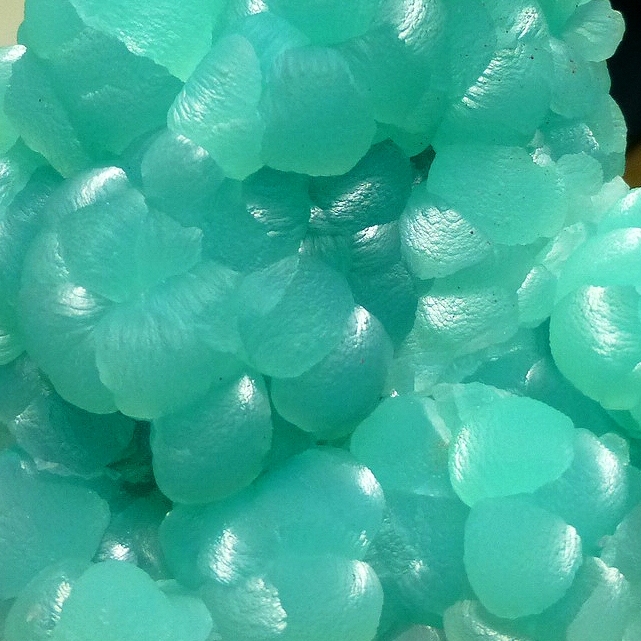Smithsonite: Gemstones Information
Smithsonite is a fascinating mineral renowned for its captivating colors, distinctive crystal formations, and various industrial applications. It is a zinc carbonate mineral and is prized by collectors and enthusiasts for its aesthetic appeal and versatility. Here, we’ll explore detailed information about Smithsonite, including its properties, occurrences, uses, and benefits.
Properties of Smithsonite:
Chemical Composition: Smithsonite has the chemical formula ZnCO3 and is composed of zinc (Zn), carbon (C), and oxygen (O) atoms arranged in a trigonal crystal lattice structure.
Color: Smithsonite exhibits a wide range of colors, including white, gray, blue, green, pink, and purple. Its coloration is influenced by trace elements such as copper, cobalt, and manganese present in its crystal structure.
Crystal Structure: Smithsonite crystallizes in the trigonal crystal system and typically occurs as botryoidal, stalactitic, or massive aggregates. It may also form crystals with rhombohedral or scalenohedral shapes.
Transparency: Smithsonite can be transparent to translucent, with a vitreous to pearly luster when polished.
Hardness: Smithsonite has a Mohs hardness of 4 to 4.5, making it relatively soft compared to many other minerals.
Occurrences of Smithsonite:
Smithsonite occurs in various geological environments, including sedimentary deposits, hydrothermal veins, and oxidation zones of zinc ore deposits. Significant occurrences of Smithsonite can be found in regions such as:
United States: Smithsonite deposits are abundant in states like Arizona, New Mexico, and Nevada, where it is often associated with other zinc minerals such as sphalerite and willemite.
Mexico: Mexico is another significant producer of Smithsonite, with deposits found in various regions across the country, including the famous mines of Santa Eulalia in Chihuahua.
Namibia: Smithsonite occurrences have also been reported in Namibia, particularly in the Tsumeb mine, where it occurs alongside other secondary zinc minerals.
Uses and Benefits of Smithsonite:
Ore of Zinc: Smithsonite is an important ore of zinc, which is a crucial industrial metal used in various applications, including galvanizing, alloy production, and battery manufacturing. It serves as a primary source of zinc for the extraction of the metal through mining and processing operations.
Gemstone and Ornamental Stone: Smithsonite’s vibrant colors and attractive crystal formations make it popular among lapidaries and jewelry designers. It is cut and polished into cabochons, beads, and ornamental carvings for use in jewelry, decorative objects, and lapidary art.
Metaphysical and Healing Properties: In metaphysical and crystal healing practices, Smithsonite is believed to possess various healing properties, including emotional healing, stress relief, and promoting feelings of calmness and tranquility. It is said to resonate with the heart chakra and facilitate emotional balance and harmony.
Collector’s Mineral: Smithsonite’s diverse colors and crystal habits make it highly sought after by mineral collectors and enthusiasts. Fine specimens of Smithsonite with vibrant colors, well-defined crystal formations, and aesthetic appeal command significant prices in the collector’s market.
Environmental Benefits:
Reclamation and Remediation: In areas where zinc mining activities have taken place, Smithsonite can play a role in environmental reclamation and remediation efforts. Its presence can help stabilize soil and mitigate the environmental impact of mining activities.
Conclusion:
In conclusion, Smithsonite is a versatile and captivating mineral valued for its aesthetic beauty, industrial significance, and metaphysical properties. With its diverse colors, distinctive crystal formations, and various industrial applications, Smithsonite continues to captivate individuals across different sectors, from mineral collectors and lapidaries to industrial manufacturers and healers. Whether admired for its vibrant hues, extracted for its zinc content, or used for its healing properties, Smithsonite remains a cherished and valuable mineral in the world of geology, industry, and metaphysics.





